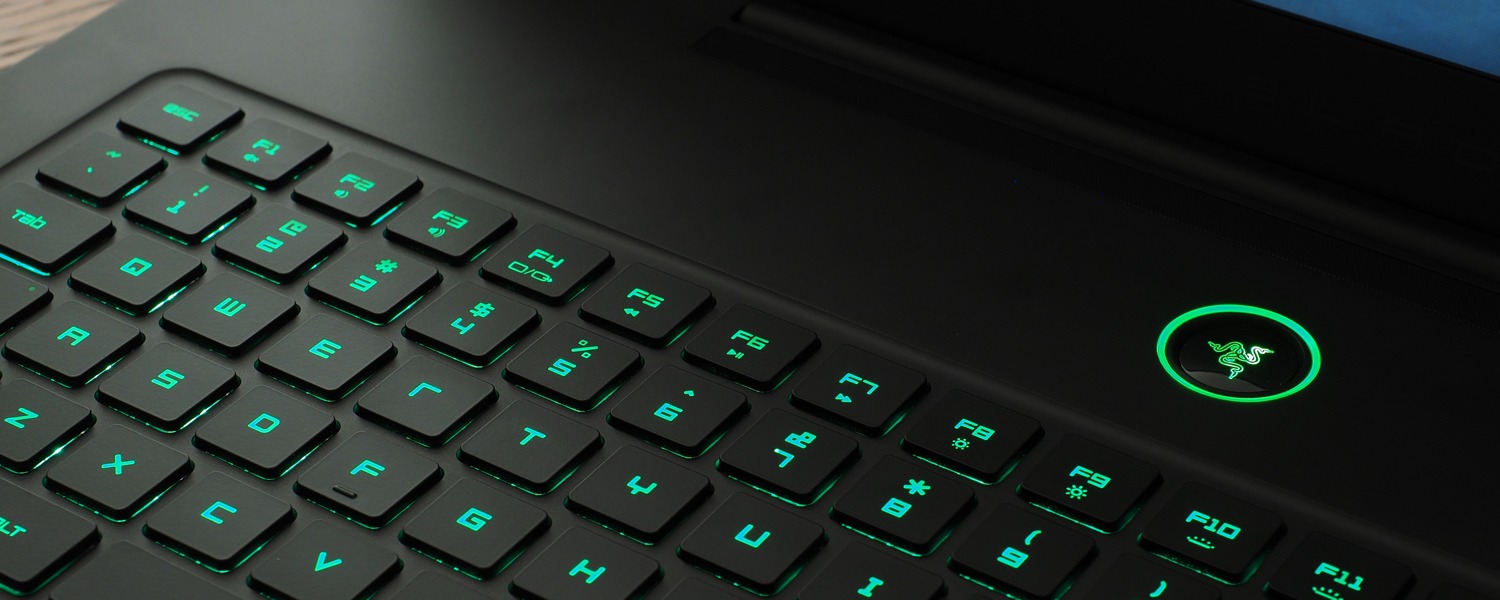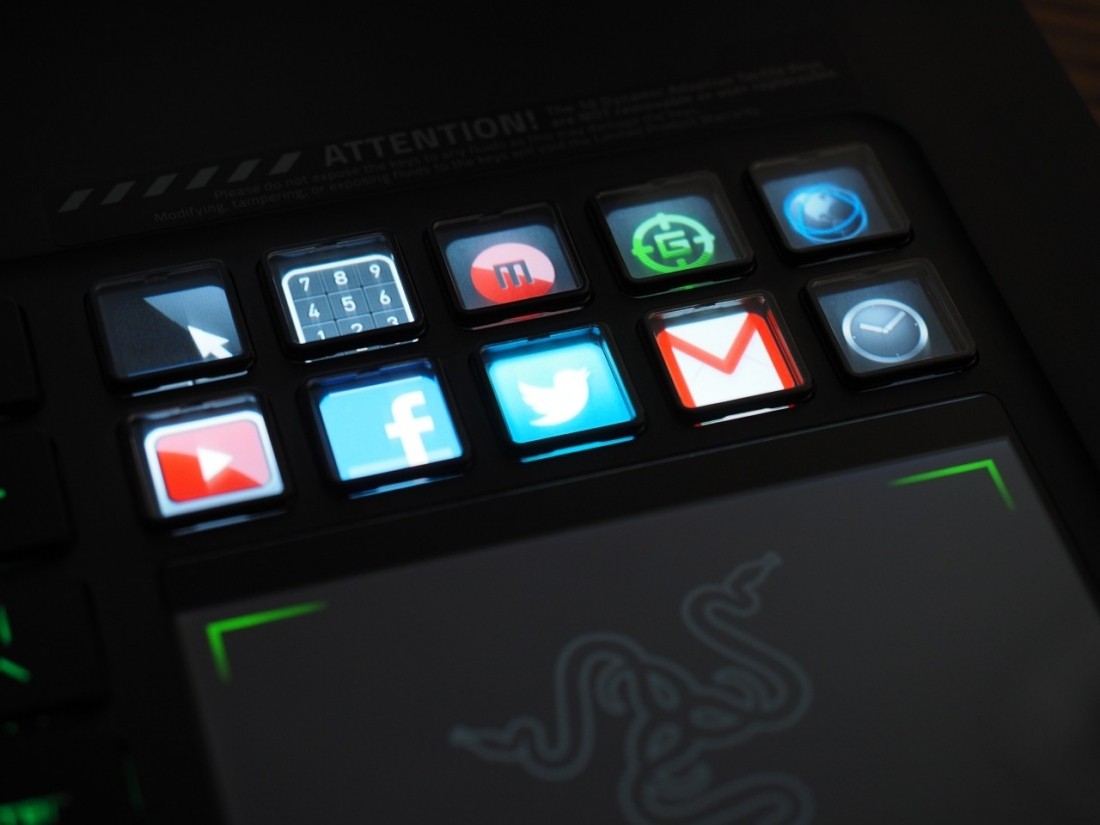Usage Impressions
Razer has outfitted the Blade Pro with a respectable set of speakers. Audio sounded crisp and clear and although there's virtually no bass (as with pretty much every notebook), I was impressed by the speakers' output. There's no distortion at max volume which is a little louder than I'd prefer to listen at. I suspect they perform above average partially because they're positioned to fire upwards instead of being mounted on the bottom or sides of the system. They're more than enough to get you through the day although when it comes time to fire up a game, you'll probably want to reach for a dedicated pair of headphones or plug in a true set of speakers for the best possible experience.
The last several notebooks I've reviewed have included some form of SSD as the primary drive, a trend that thankfully continues with the Blade Pro. Our review sample included a spacious 512GB SSD alongside a 1TB hard drive for storage purposes. As a result, the system booted up in just 13 seconds and felt zippy when installing games, launching applications and surfing the web.
Razer's decision to use a large 17.3-inch display certainly makes sense both when it comes time to play games and get some work done. The matte-finish means you'll be able to use it under bright light without glare being a major issue.
At a resolution of 1920 x 1080, images aren't as sharp as we've grown to expect from QHD+ panels, though that would be mostly for desktop work (which this laptop caters to) since gaming at 4K is still a challenge even for the fastest desktop-grade GPUs. In its defense, I'm not aware of any 17-inch notebooks with anything higher than a 1080p display, so it's not really something we can fault Razer for. It's just a compromise you'll have to make versus a 15-inch 4k screen although if you don't have any facetime with a newer high-res display, you honestly won't know what your missing.
On the flip side, one advantage of having a lower resolution screen is the fact that you don't need as much graphics processing power to push it or the battery life compromise that potentially comes with it.
Razer configured the bigger Blade Pro with a GTX 960M, while the 'standard' Blade gets a beefier GTX 970M. Granted, the latter needs to push out more pixels, but we still found the GTX 960M a bit of a puzzling choice for a full-size, high-end gaming laptop. If anything, you'd anticipate the Blade Pro packing upwards of a GTX 980M or even SLI but that's simply not the case as Razer is ultimately going for a more balanced system here.
As a result, gaming performance isn't anything to write home about. On average, you can probably get away with running most games at medium settings around 50 frames per second or so. Bumping up to high graphics settings on average pushed gameplay below the 30 frames per second barrier that many consider acceptable enough to play. It's acceptable and far better than you'll get with an integrated Intel solution but it's not going to blow you away with high frame rates.
Elsewhere, performance felt snappy. Our standard YouTube 4K resolution video test was only able to stress the CPU to 30 percent as the playback remained flawless throughout. As such, any video you encounter on the web should be playable without issue now and for several years to come.
The keyboard and Switchblade UI are strong points for the Blade Pro. The keyboard didn't give me any issues and the backlight is subtle and adjustable. As for how much of an advantage the Switchblade UI will give you, that'll ultimately be decided on an individual basis. The display is reminiscent of the LCD screens Logitech included on some of its gaming keyboards years back that show handy stats while gaming but this is on a whole other level. I certainly see this being more of a gamer's tool but with business-minded and practical apps also available, it can bolster productivity as well.
Gaming aside, I really liked having the touchpad and mouse click buttons positioned to the right side where the mouse on a desktop system would be. This felt much more natural than having it below the spacebar as is the case on pretty much every other notebook around. I wouldn't mind seeing other non-gaming systems adopt this new layout, granted there's enough space for it as that's probably not likely on anything with a display smaller than the Blade Pro's.
I'm a proponent of macros but the one problem I have with them is remembering what each button was set to. With the Blade Pro, I can create custom icons to jog my memory. The look and feel reminds me of the infamous Optimus Maximus keyboard from way back. That board, which offered a full complement of customizable keys, was simply ahead of its time and thus, cost prohibitive. Razer has taken a more practical approach which certainly works.
It's worth mentioning that the button displays are arranged in a manner to be best viewed when using the notebook in the standard position. Looking straight down onto the keys or from any other angle reveals a blurry image.
Having the touchpad double as a secondary screen can be useful as well and it's certainly the main talking point of the machine. I had one friend make a special trip over just to check it out in person. The resolution and quality aren't comparable to say, a modern-day smartphone screen, but it's more than adequate for this application. Needless to say, my friend was impressed with what he saw.
If you're one that cares much about how your system looks, be forewarned that the Blade Pro is quite the fingerprint magnet.
For a system with as much real estate as the Blade Pro affords, connectivity options are surprisingly on the light side. The three USB 3.0 ports are nice, as is the HDMI port, but an SD card reader and DisplayPort connection are noticeably missing. I would have also liked to see a USB Type-C connector but given how new it is, it's understandable why it wasn't included.
Razer makes good use of the real estate in terms of heat dissipation, too. While certain sections of the system can get rather warm during heavy loads, it's nothing even close to be concerned with. The fans spin up when the action gets intense but noise output was acceptable. At worst, it could become a minor annoyance but during intense gaming, you're likely to not even hear it.



